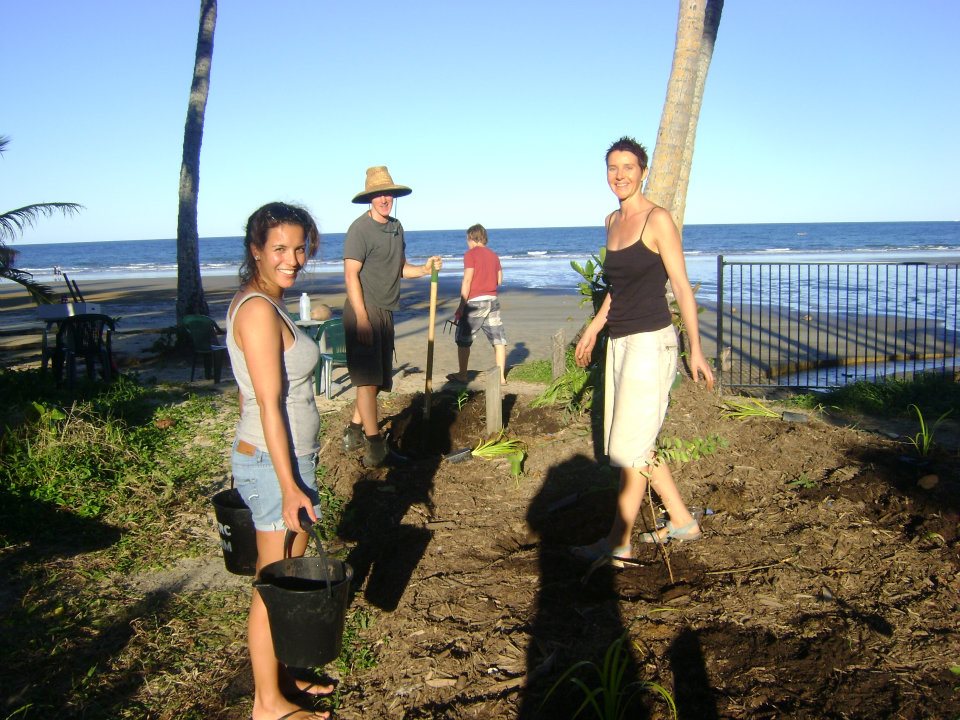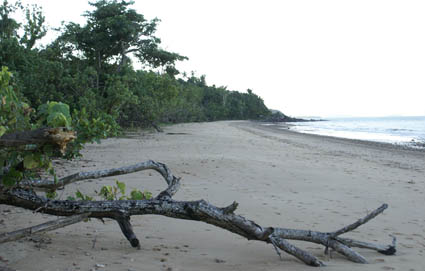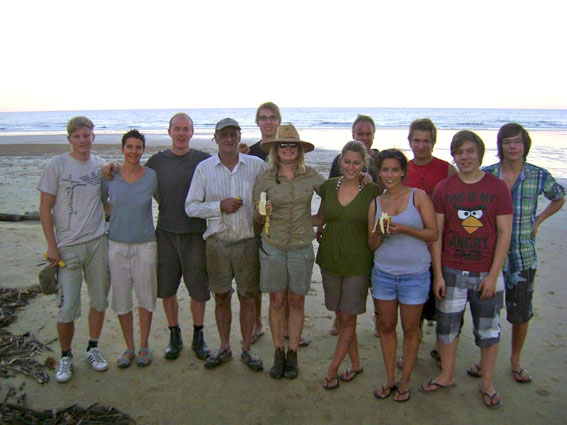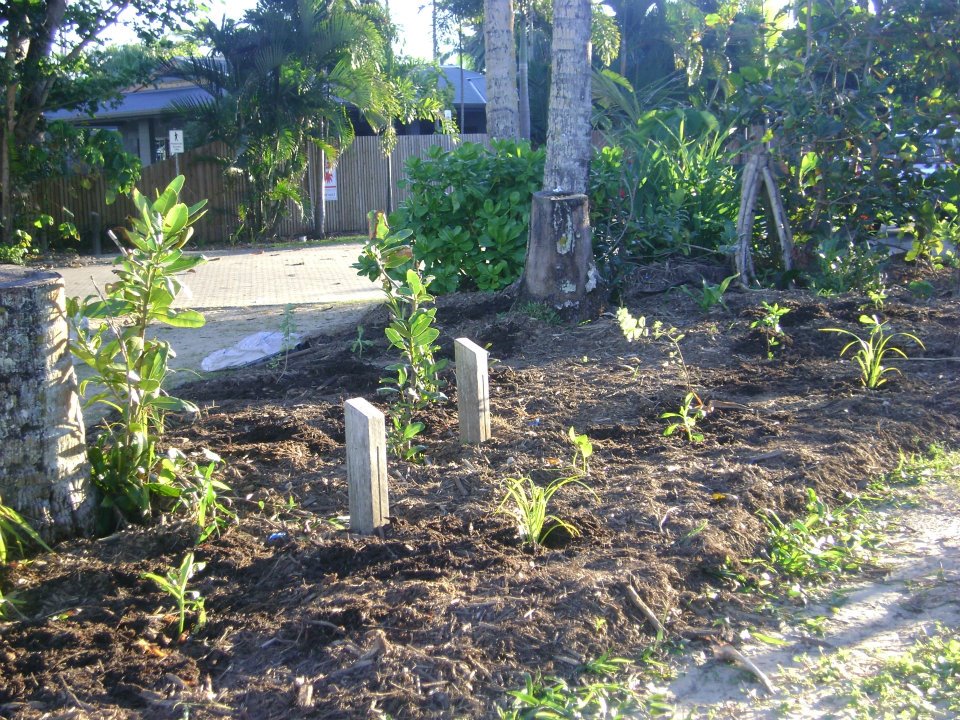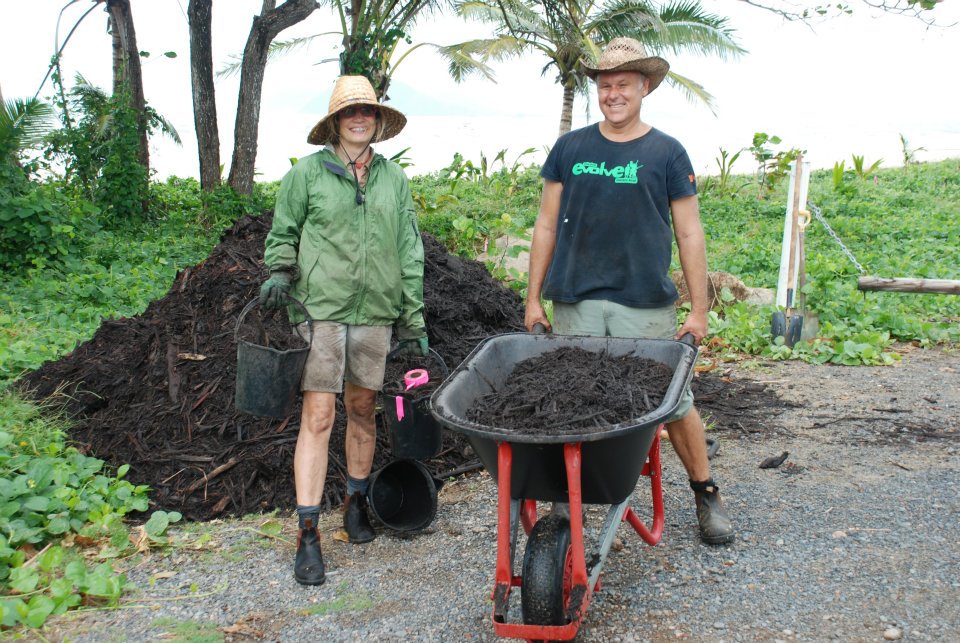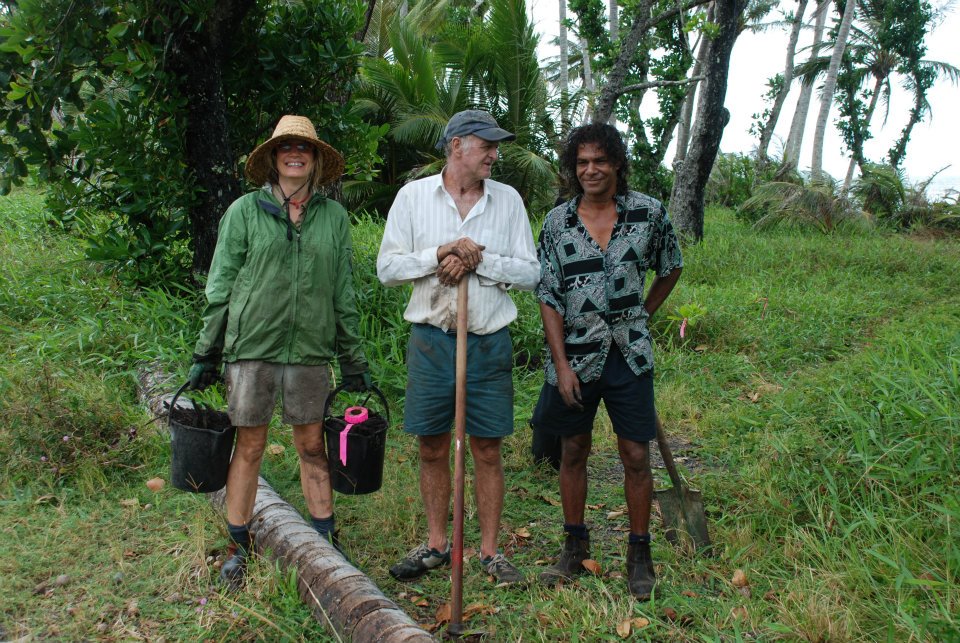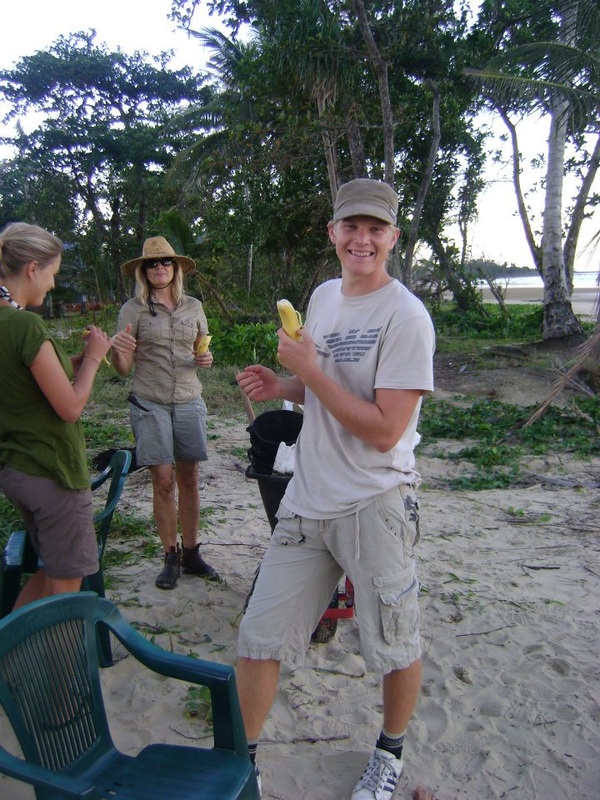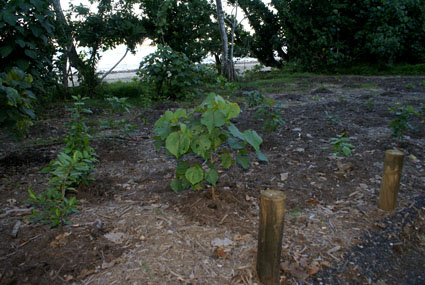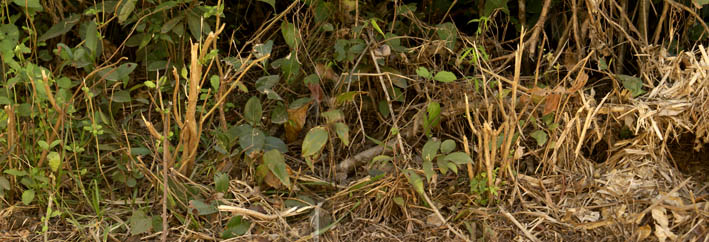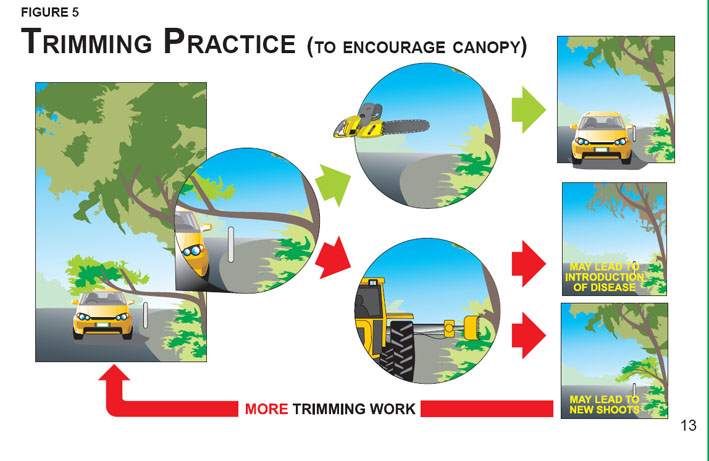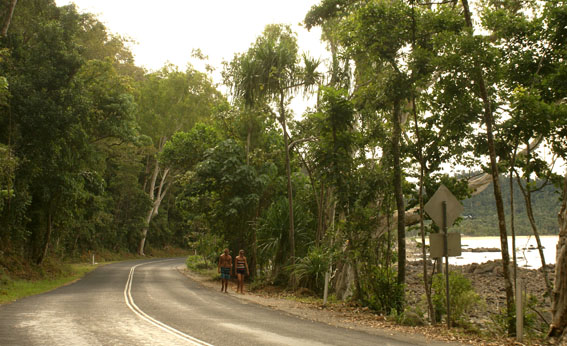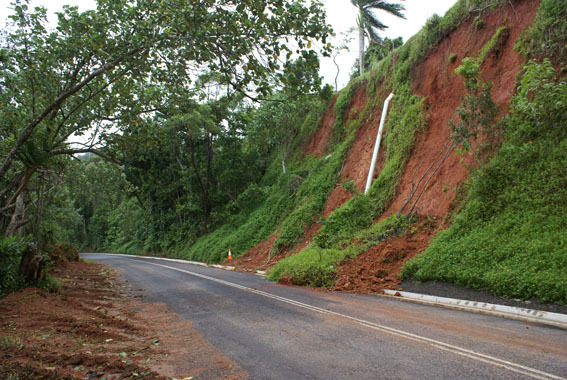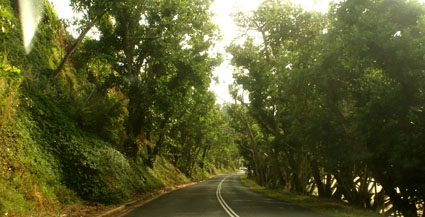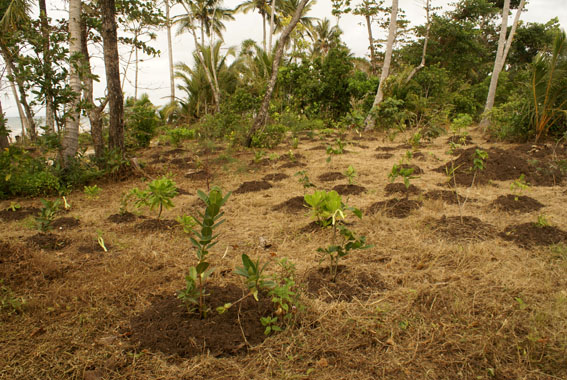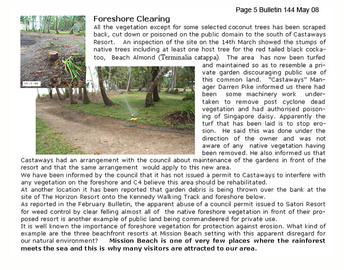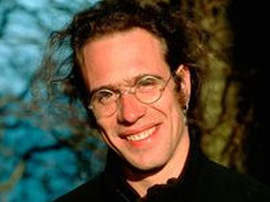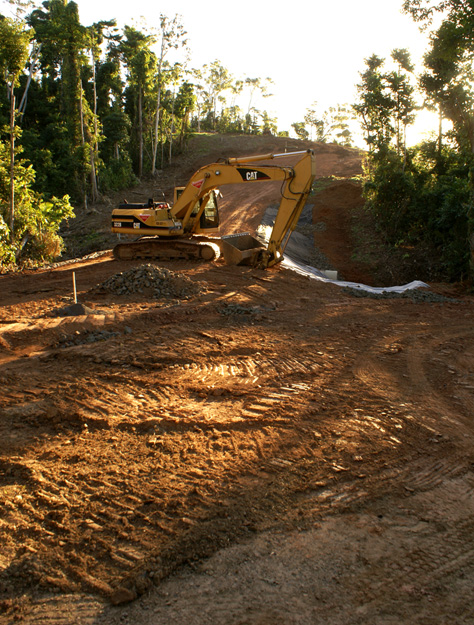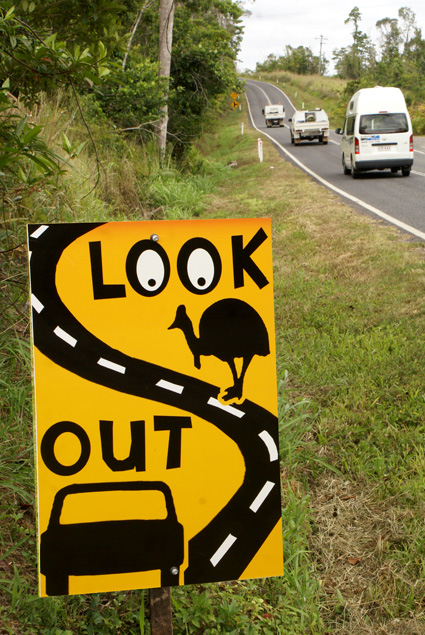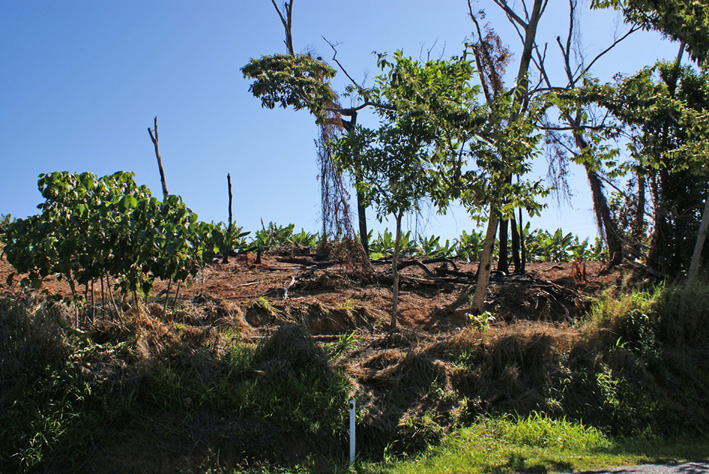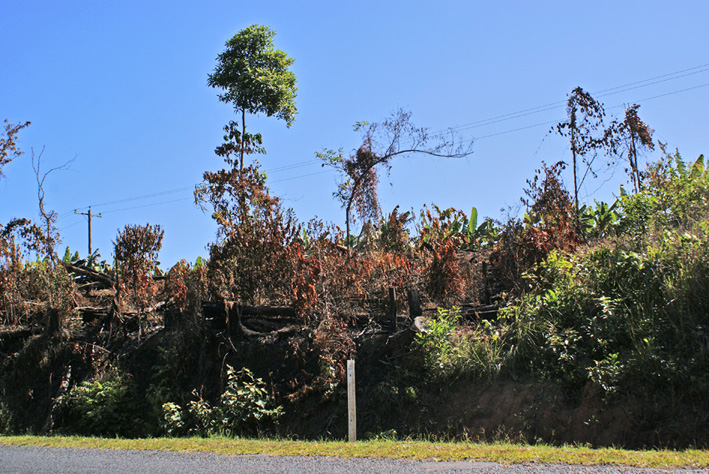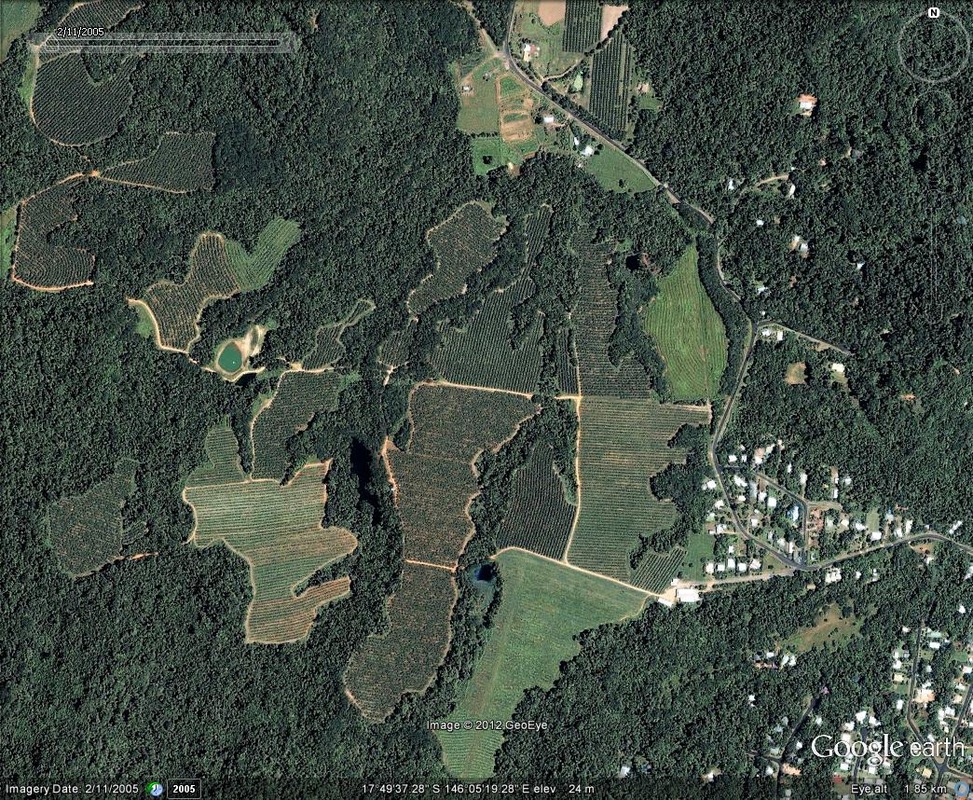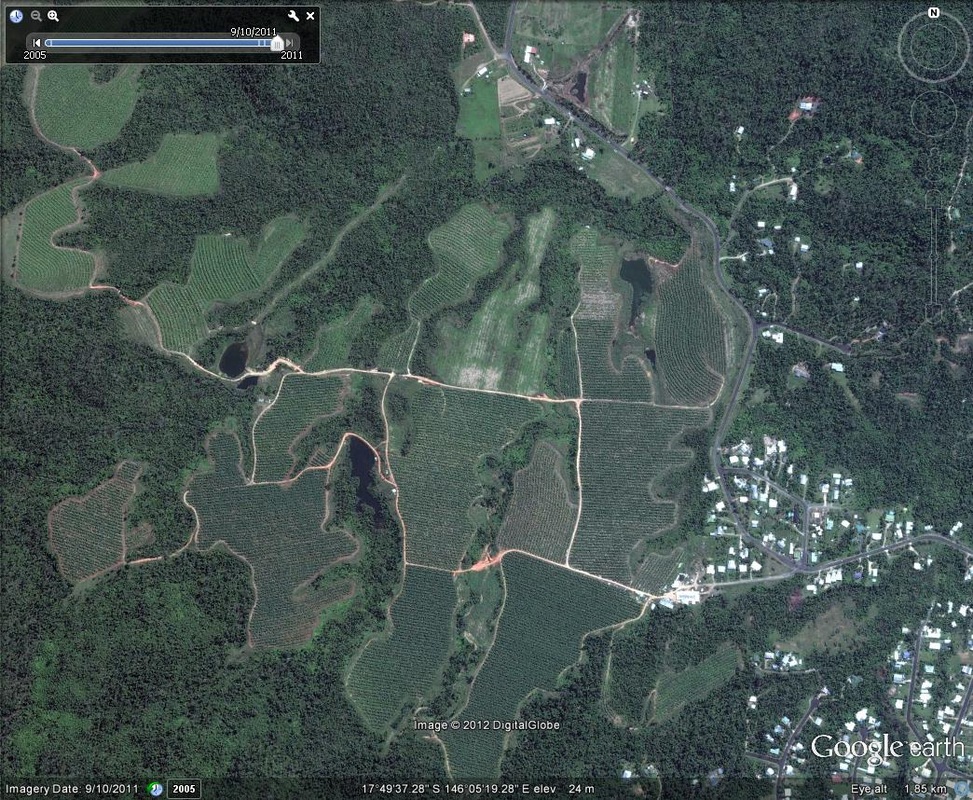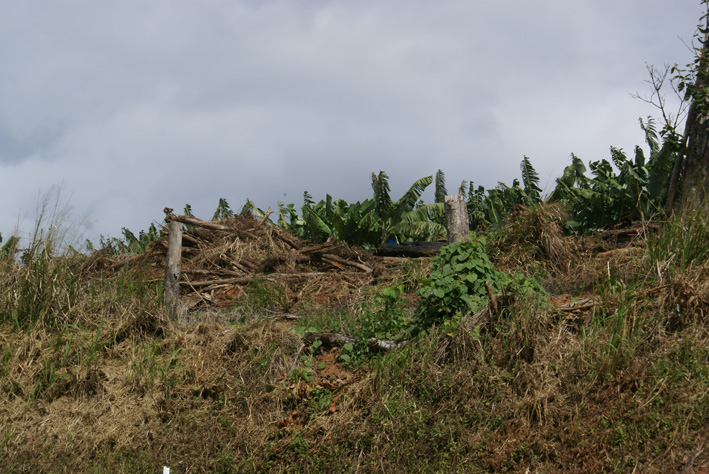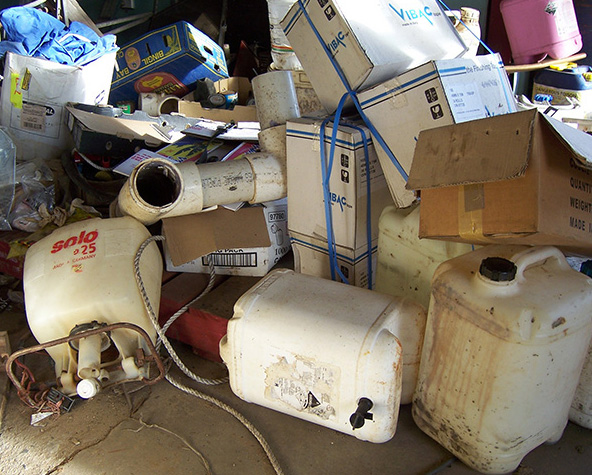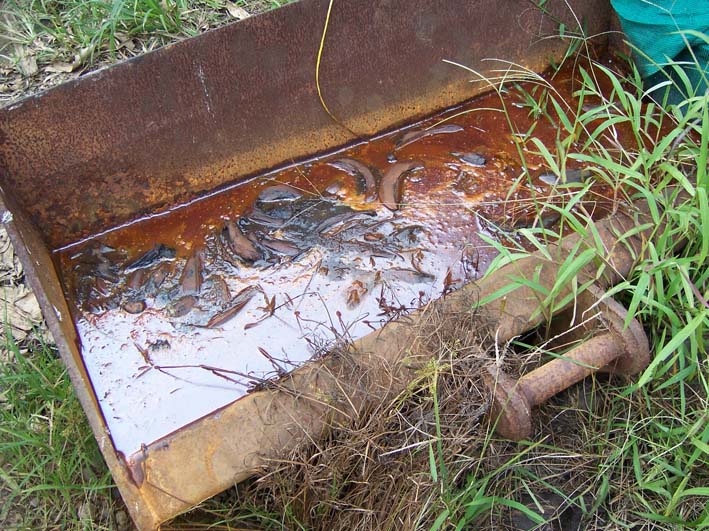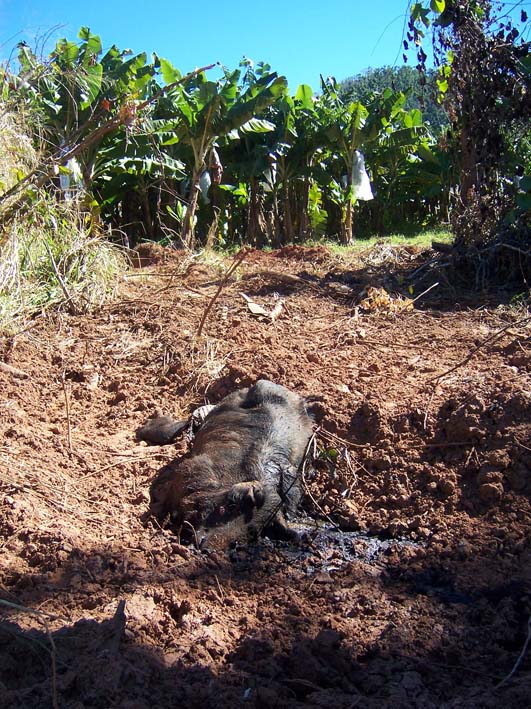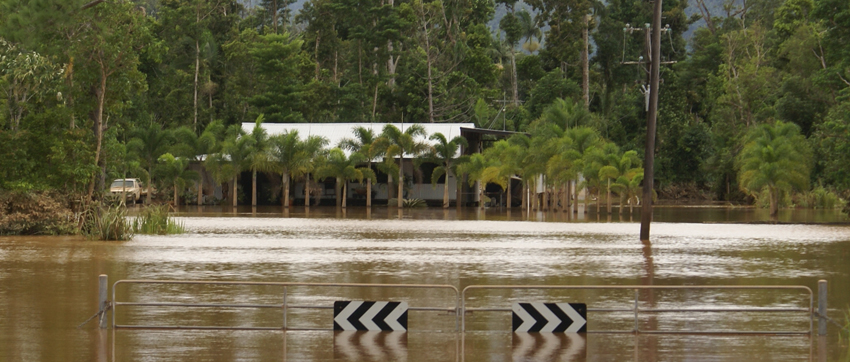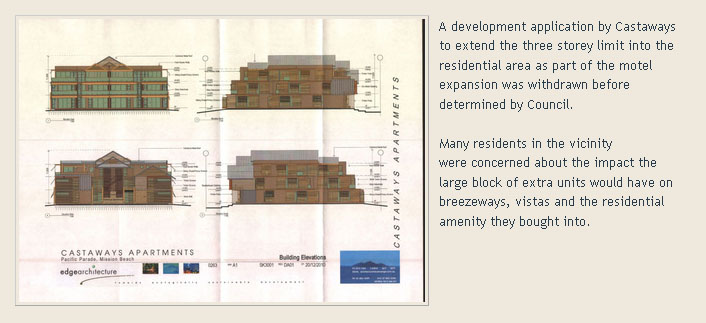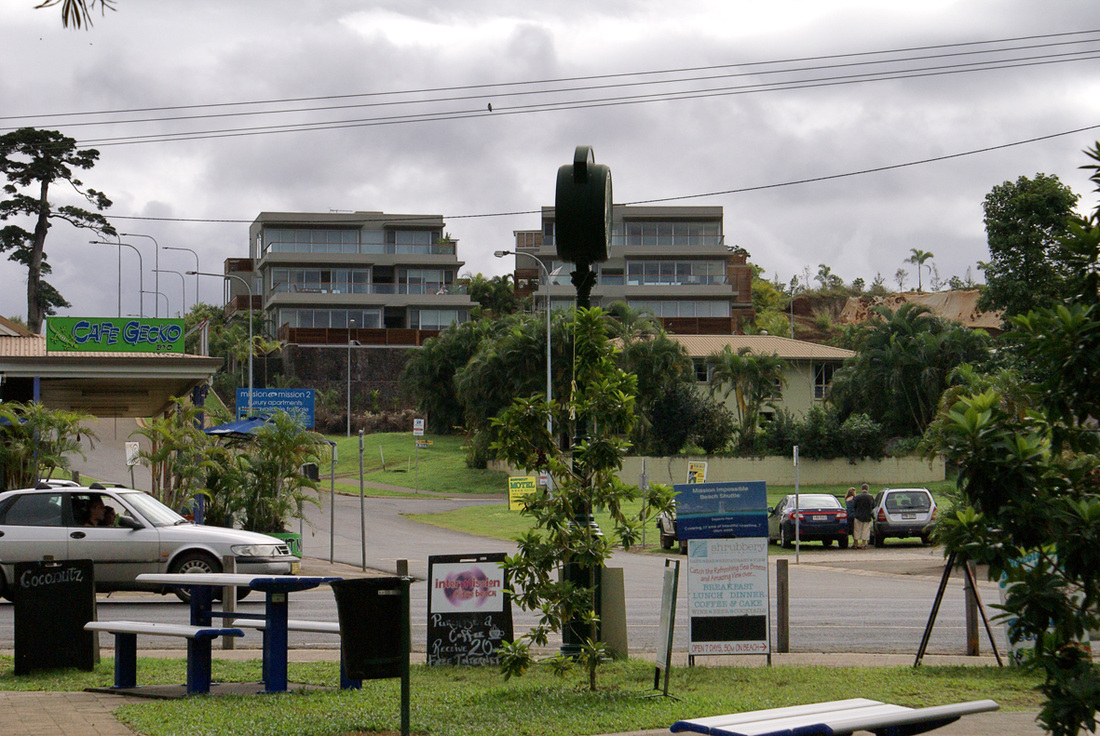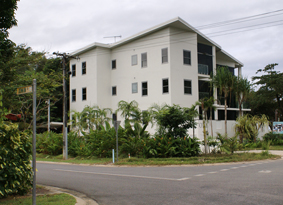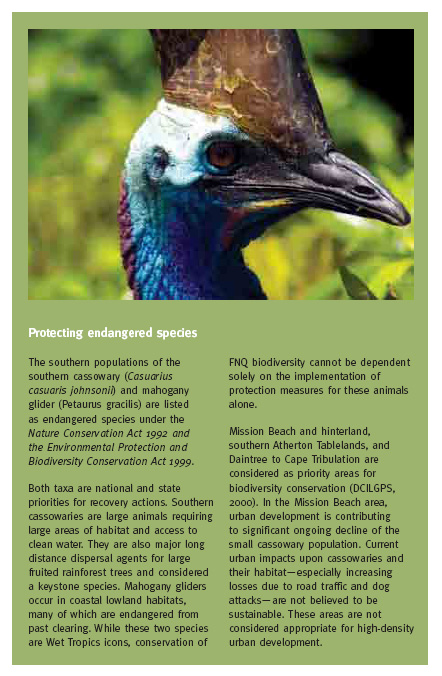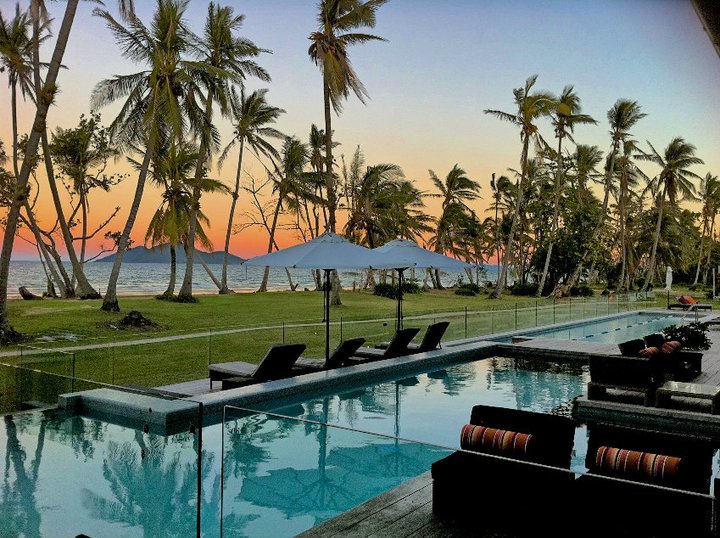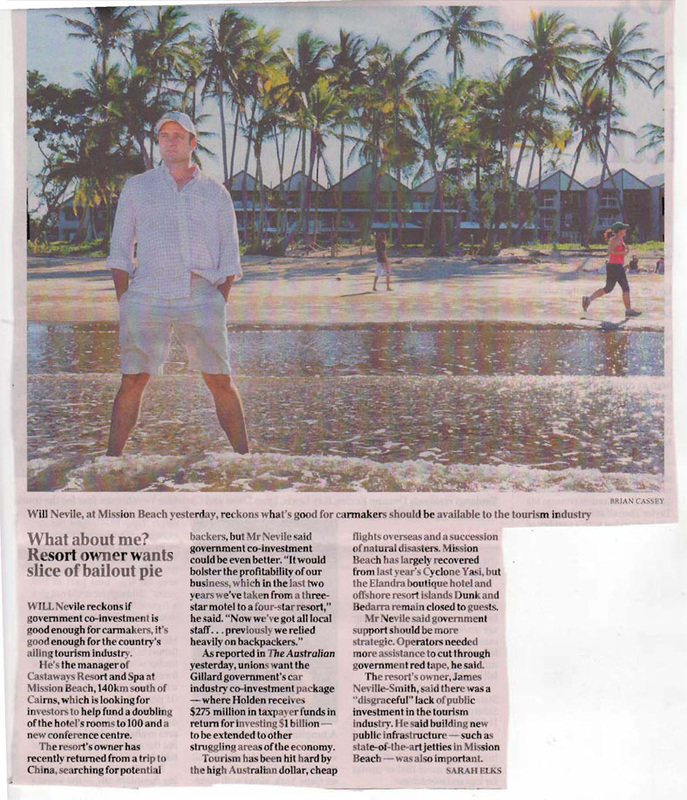| As we all know, the environment of the Cassowary Coast is very special but it is also very fragile. It is a cyclone adapted environment, but development, tourism and two severe cyclones in only 5 years have taken their toll and participating in the plant outs has shown me how fragile such an environment is. A healthy foreshore vegetation is key to stable sand dunes, the most effective barrier against erosion. |
| Congratulations to all who have been involved in the many plant outs along the foreshores of our beaches. It is an acknowledgement of how intrinsic the value of the natural environment is to our community, lifestyle and well being at Mission Beach. Hundreds of volunteers have spent countless hours over many months planting thousands of native trees and shrubs to help repair the damage to our dunal system as a result of cyclone Yasi. The Cassowary Coast community as a whole deserves acknowledgement for the exceptional effort that is being made. |
Kerstin Pilz has been one of the many 'coast care' coordinators. She has kindly written and shared the following story and photos of her experience with the ongoing re-vegetation project at Marine Parade in the Mission Beach village area.
| Plant outs along North Mission beach have been fun and educational, despite the weather. Our first plant out was held before Christmas and due to the heat we started at 5:30. One of our most recent was held on a very rainy Saturday morning and we lost a few volunteers to the rain. But the plants loved it and a core group persevered under any conditions. |
| While all the positive re-vegetation work is being done, it is with disbelief to see the destruction on the verges and banks of the Cassowary Coast Regional Council (CCRC) managed roads as a result of recent maintenance works. Scarce valuable funds for the natural environment have been spent to destroy trees that have been planted with ratepayers money. |
| The vegetation that survives will now bush out instead of growing tall into a canopy over the road. It will not only require more frequent maintenance but is completely contrary to the requirements of the World Heritage roadside management guidelines. |
| Mission Beach is high biodiversity area where the world heritage values extend outside the boundaries of the protected area. You can guarantee there is something quite rare or unique wherever you are. Driving the Council owned roads from Clump Point to Garners Beach including the esplanade track, you will travel on a tourist scenic route where two World Heritage areas meet, and through vegetation that includes essential cassowary habitat, critically endangered coastal and littoral rainforest and 'of concern' remnant vegetation, |
| Part of the drive passes a section of bank at Bingil Bay that required major engineering works after a 2008 land slip. A metal mesh was stapled into the bank and trees planted strategically to help long term stabilisation. The saplings, surviving Cyclone Yasi, had reached a stage where the Singapore daisy was starting to be shaded out and were beginning to show how the bank would eventually self re vegetate to resemble the adjacent rainforest canopy drive into Bingil Bay. These established saplings have now been destroyed. |
| The CCRC are investigating what happened and an officer from the Wet Tropics Management Authority (WTMA) plans to hold a workshop for Council staff on the protocol of vegetation management in a World Heritage area. Something, he told me, has been needed on many occasions over the years as new contractors are employed. |
| At the last Mission Beach Community Association (MBCA) meeting It was disappointing to hear both the Mayor and our new local Councillor agree with a complaint from the floor about the foreshore re-vegetation being "planted too close together". They were asked "what are they trying to do? Stop the views? The Mayor's response was to reassure the person, "not all the trees will survive and the Council will not be planting in some areas such as in front of houses or resorts that already have cleared views". Mission Beach representative, Councilor Pike is quoted in the MBCA minutes as saying he "is concerned about the ‘over planting’ in some areas. |
| The current attitude gives little confidence that the work being carried out by the community on foreshore planting will be given a high priority for follow up management and protection. Our local representatives need to hear from those in the community who appreciate and want to protect the natural environment as an integral part of our economic and community well being. Please consider writing to your local councilor, Mayor or CEO, writing a short letter to the Tully Times or the Innisfail Advocate newspapers or attending the (MBCA) meetings. It doesn't take much time but it does make a difference! |
The vision of MBCA is to represent the community with "one voice" in its relations with Council, State and Federal Government Departments . Mission Beach is cosmopolitan in its population make-up. Nearly everyone comes here from somewhere else. We are all entranced by the natural beauty of our environment, the friendly community spirit of our village lifestyle and our easy access to one of the world's best kept secrets. As a community of separate villages we need to work together to achieve the best outcomes for the preservation of our natural environment whilst influencing the shape of our inevitable development.
If the MBCA is 'the voice for Mission Beach', it is as strong as it's membership. The loudest voice will be heard. So it is up to all of us to take interest and have input if we are concerned about how our special environment is planned and managed.
| It was a great privilege to meet and spend a day with biologist/nature - wildlife photographer Christian Ziegler last weekend. Christian is in Australia working on a magazine story about the Southern Cassowary for National Geographic Magazine. The high profile photo/journalist said he was here to find out about the situation on the ground and to chat about the cassowaries in our neighborhood. |
| In his introductory email Christian wrote " I hope that this story will give this endangered species the spotlight it deserves, and might also be helpful for the conservation efforts. I would be very interested to hear what aspects you would think are important to include in this coverage (behaviors, conservation issues...)". It is remarkable that in the short time he has been in the north he has been lucky enough to photograph the abandonment of two chicks while a male pairs up with a female at the start of this mating season. While following the birds he happened on a clutch of five eggs which he now hopes to go back to and find the male sitting. |
| I was able to be Christian and his brother John's guide for a day to help familiarise them with the situation the cassowary faces at Mission Beach. As with all the journalists or documentary makers who have visited Mission Beach in recent times to write about or film cassowaries, Christian questioned why the threats to this endangered species are not being addressed. It is hard to answer that question especially as the local council has adopted it as their icon, and many businesses are using the cassowary in their logos and promotional material. I look forward to meeting Christian again during his future trips to our region this year. Read more about Christian Ziegler, Associate for communication, Smithsonian Tropical Research Institute, Panama. See some of Christian's awe inspiring photography. |
| Yet another Cassowary was killed on Mission Beach Roads. An adult bird was hit by a vehicle at 8.30 in the morning Tuesday (5th June) at a known crossing area. It is obvious that 80kph on a winding stretch of road with crests and dips which cuts through cassowary habitat in a World Heritage Area is too fast. At a recent community meeting, local councilor Alister Pike reported he had the unpleasant job of moving a kicking cassowary off the road after it had been hit by a bus taking children to school. Apparently the bird ran into the path of the vehicle and the driver was unable to stop in time. The recent JCU traffic impacts report identifies this stretch of road as a hotspot for cassowary road deaths and recommends urgent action including speed reduction and vehicle activated signs. |
The report states "this zone is also afforded a very high priority for rapid implementation of mitigation measures. A recent death was recorded. This is a high speed road section with a very poor line of sight in most of the section due to curves, crests and dips in the road".
| "Vehicle speed limits should be reduced to 60 kph immediately and some form of road-based traffic calming implemented to complement this if possible. In this section the poor line of sight may require careful consideration of safety factors for drivers, so provision of road-based traffic calming may be difficult. The implementation of speed enforcement in this section, possibly in the form of speed camera installations in which cameras are placed at unknown intervals, or signs that register the speed of a vehicle (Chapter 5) could provide a means of achieving a reduced speed in this area. That's what the report says! So what are we waiting for...another death?
|
| The highly productive banana Farm at Bingil Bay was bought by a well known Cassowary Coast farmer, Mr Singh, shortly after Cyclone Larry in 2006. Since then there have been numerous and constant complaints about vegetation clearing. One of the earliest and most visible of the clearing was the line of native forest on the top of the cutting on Bingil Bay Road at Plantation Drive that was burnt and removed. |
| The roadside trees were removed to expand banana planting. To date the farm does not extend right to this edge so The visual amenity of the line of native vegetation enjoyed by locals and tourists while driving around the rural/conservation township of Bingil Bay was destroyed for no apparent reason. Despite the number of reports, without photographic evidence or people prepared to make statements in court, very few cases of illegal clearing result in a conviction. |
| Concerned and frustrated neighbours could hear bulldozers working late into the night, but without trespassing could not see where the clearing was being carried out. Various government departments were alerted and have visited the farm over the last 6 years after reports and photos from farm workers confirmed shocking work practices that posed serious health and safety issues on this once well managed farm that dominates Bingil Bay village. |
The World Heritage Area and the endangered cassowary are of interest to the Federal Government as matters of National Environmental Significance under the Environment Protection and Biodiversity Conservation (EPBC) Act. The Compliance Branch have been aware of Mr Singh's activities for some time and have now enacted the Act by requiring the riparian zones to be re vegetated. We are reassured by the department that the Conservation Agreement entered into by Mr Singh and the Federal Government is enforceable.
Hopefully the issues in this article have been successfully addressed and resolved by the relevant authorities. The federal governments intervention is most welcome.
You can read the agreement document available on the Federal Government website here.
The location of the development within the Big Maria Creek catchment adjacent to the World Heritage area of Laceys Creek National Park would have required destruction of remnant vegetation to establish several house sites and associated infrastructure on the ridge while the lower formerly farmed area was planned for lifestyle lots.
The lot is adjacent to the stretch of road identified as a cassowary road death hotspot where the most recent death occurred.
Not to mention the oversupply of residential housing, including lifestyle blocks, at Mission Beach.
The Council decision is currently being challenged in court.
The photos here show the muddy waterline as the water was already subsiding.
environment, community vision and Planning Scheme?
| It follows an application last year that was withdrawn before Council consideration. The style of development proposed was well beyond the density allowed within the current planning scheme and out of character for Mission Beach. The same can be said about the current proposal where 44 additional hotel rooms and a large function centre are planned to be crammed onto the existing resort site. |
| | The impact of the increased noise of traffic movement and outside functions associated with this and eventual expansion on the rest of the lots owned by Castaways would irreversibly compromise the quiet residential amenity already being felt by current activities. Despite an economic downturn and uncertainty in the tourism market, this proposal is a 'business as usual' scenario. It relies on 'growth' and mass tourism which has little consideration for the impact it may have on the 'big picture' vision i e the very values that attract visitors to Mission Beach. To ignore what Mission Beach has to offer will 'kill the goose that laid the golden egg'. |
How can Mr Neville reconcile his understanding of current tourism trends with Castaways exploitation of natural attractions through mass tourism? Perhaps there is a conflict of interest.
| Over decades the community input to planning on all levels of government has resulted in policies that seek to protect the exceptionally high scenic and high biodiversity environment. The world heritage values of the Wet Tropics and Great Barrier Reef are what make Mission Beach so special, containing significant areas of ecological significance including essential habitat for the endangered cassowary. These values must be considered as a priority for protection in any development aspirations. The most recent FNQ2031 Plan reflects the very clear vision voiced by the community during the consultation process. In the Plan Mission Beach is seen as a village activity centre not a regional growth area. It states "Much higher levels of self containment ......" "Densities are to be kept low and building heights limited to avoid increasing traffic generation"......."local employment generators will need to be developed based on protection and enjoyment of the natural environment. |
(*All now not operational).
It is difficult to see how such an expansion can be viable with the current global economic climate and a proven 6 month a year tourist season limit.
Further foreshore clearing carried out by current management immediately upon taking ownership of the properties, and introduction of features that work in competition with local small business, has not shown any sensitivity to the environment or existing businesses.
| The maintenance style and tourist promotion of Mission Beach by Castaways denies the natural beauty of an area where the rainforest grows naturally down to the sea and where you have the best chance to see a cassowary in the wild. Some visitors to our area are confused about what it is that Mission Beach has to offer. Especially those who are looking for a nature based experience who comment on how little emphasis or information there is to be found about the natural area in tourist promotional material. With all the land owned by Castaways and the will to succeed, there is an excellent opportunity to lead the way with a genuine approach to 'sustainable' tourism development. |
| While Mr Neville Smith is seeking investment partners for expansion, Mr Neville (don't be confused) is appealing for government assistance, comparing the downturn in the tourism economy to the collapse of the car industry. Will Mr Neville also be appealing to our local council to approve this inappropriate development on the basis that it would be difficult to find an investor without an assurance of approval? | Castaways owner Mr Neville-Smith is currently in China seeking a $20 million dollar investment partner. How many tourists will need to visit Mission Beach to give a profitable return for such an increased investment? Has Mr Neville Smith given any consideration for the impact the extra traffic will have on the cassowary population already seriously at risk with the number of road strikes? |
This development proposal does not comply with the current planning scheme under the density codes, parking requirements, the vision for Mission Beach zone, or the landscaping guidelines. It is- inappropriate, unrealistic unsustainable. If approved, it would set a precedent, encouraging like minded developers, creating a vicious circle of natural environment destruction.
There has to be a better way. :-)
